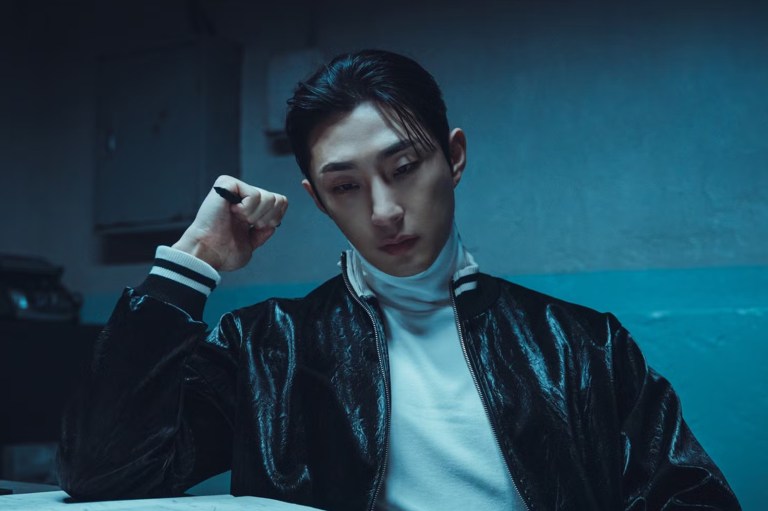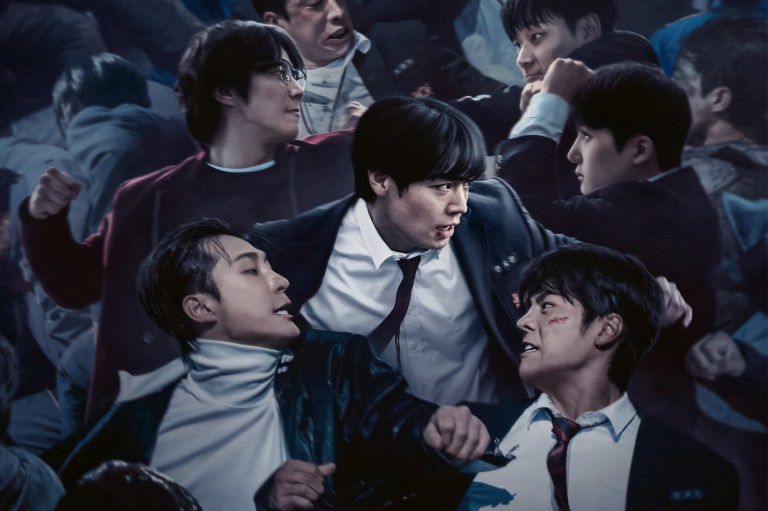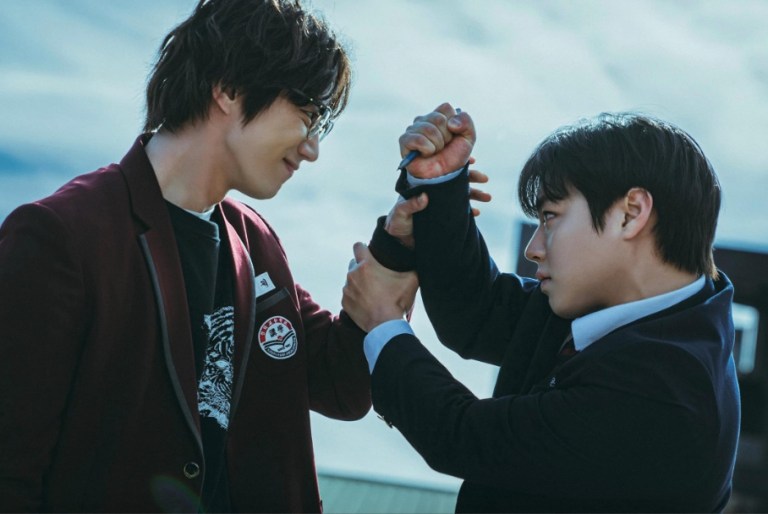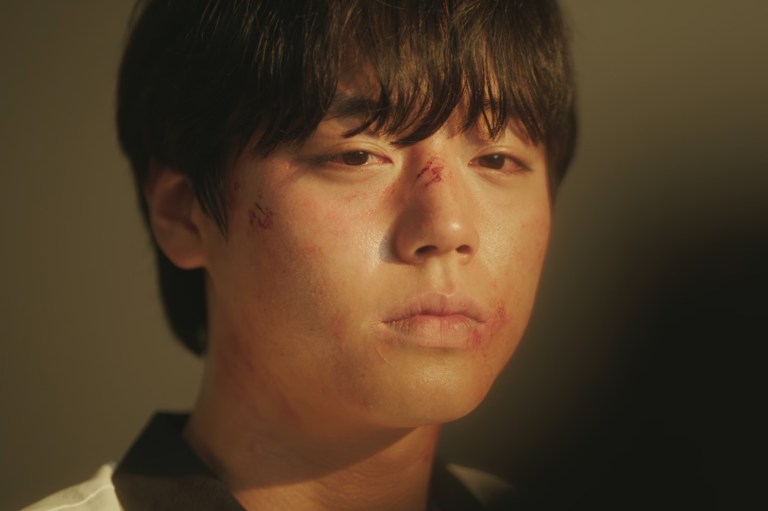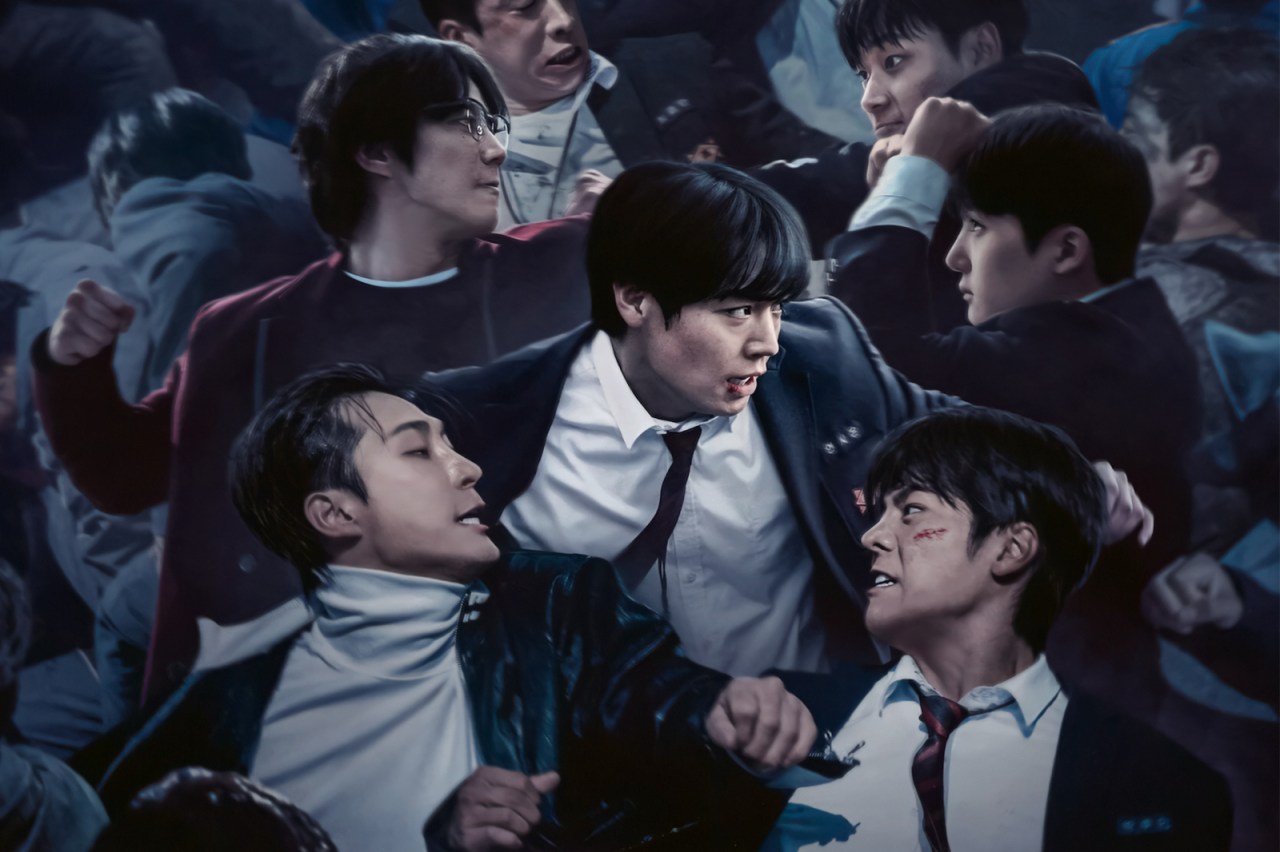
‘Weak Hero Class 2’ Takes The Baton From ‘Adolescence’ In Netflix’s Examination Of Modern Masculinity
Adolescence created an insane amount of buzz earlier this year with its story of a 13-year-old boy who brutally murders a female classmate, to the astonishment and confusion of the adults and systems which completely missed all the warning signs, but the world of Weak Hero Class 2 might be even bleaker.
Focusing on male-on-male violence in the setting of an all boys high-school, the central question of the series is not what makes a person violent, although we are supplied with several potential answers, but what to do about it’s inevitability. Teachers, parents, and police are all uselessly incompetent when it comes to protecting the minors involved, and there is no magical Mr. Miyagi figure preaching pacifism and structured, stylistic martial arts training as the answer either.
The beautifully choreographed fight scene imply that everyone in this fictional world already has some degree of taekwondo training (we are in Korea after all), but the aesthetics dissolve into something so brutal and animalistic it takes us into Ender’s Game or Lord of the Flies territory. It possess a visceral realism that teeters on gore.
But beneath all of that unadulterated bloodlust is an emotional and psychological examination of modern masculinity. While the adolescent setting serves as a microcosm or Petri dish for us to examine the causes and effects driving these unending cycles of violence, there’s no mistaking the metaphor for the larger implications of an entire society built around this bully-victim ‘food chain’.
Protagonist Si-eun is an introverted and overachieving student driven to constantly defend himself (more often than not with his two fists and a pen) against a siege of teenaged aggressors. We find in every case that these bullies are in fact victims themselves, of everything from insecurity to parental abuse, extortion, criminal threats and beyond. With an online ‘manosphere’ that preaches men need to be ‘alphas’ not ‘betas’, Weak Hero shows us a world where the alpha facade is merely a smokescreen, behind which an even bigger and more dastardly predator is always lurking.
Schoolyard bullies are minions to teenaged gang lords and drug dealers, who are errand boys to the real-deal adult criminals. But there is no refuge for the well-to-do or above board, for even parents and government officials can be the boss-level King Pin provoking a child’s violent behavior.
While thoughtfully exploring these very real, and often dark motivations, Weak Hero never fully excuses the behavior because of them. We can sympathize with the plight and the moments of a bully’s own victimhood, but we’re always presented with agency as the alternative to perpetuating the cycle of violence. The main solution proposed? Male friendships.
While impressing female peers is a critical part of the milieu and pecking order at the all-boys schools, we’re dealing with a homosocial environment, where men socialize primarily with men. At times it reaches almost Greek or Shakespearian proportions. When we see an entire schoolyard of boys rushing at each other like two armies meeting on a battlefield, the camera reveals the truth, that the real catalyst for the fight is a fractured friendship between two individuals.
Weak Hero Class 2 is all about this scaling out and zooming in. Where the first season focused on budding friendships and newfound community after Si-eun’s isolation, this season’s definition of community expands to include a series of neighboring schools all dominated by the same gang who demands their unwavering loyalty.
Where Si-eun’s justification for fighting evolved from pure self-defense, to protecting a close circle of friends, it now becomes an act of resistance to something more systemic, something so ingrained in money and power it has the potential to terrorize the majority, not just the weakest of the lot, or those mistakenly perceived to be.
It’s this amplification that brings us to the final inter-school battle, where the outcome of the fight will determine the future of the community instead of Si-eun’s handful of friends. When gang-leader Na Baek-jin appears to defeat Eunjang High’s good-guy and all-around protector Park Hu-min, everyone appears to give up, as if he were a slain general or king.
It’s the courage of those like Si-eun, who continue the fight after watching their heroes fall, where the real resistance lies. It was never punching back that made Si-eun brave, but his ability to get punched and still look his opponents dead in the eye as he picked himself up. When we the audience, and all of the other boys witness Si-eun getting beaten into submission, we realize it was never about winning or losing, but about refusing to give up in the face of tyranny, because the series has shown us all to well what the consequences of the alternative are.
Acquiescing to bullies does not save victims, or the loved ones who get used as leverage. The torment merely continues, whether the target is weak or strong, as both Seo Jun-tae and Park Hu-min’s manipulation illustrates. Both become vehicles for crime, both are used at tools to perpetuate the same cycles they’ve fallen victim to.
So where does that leave us? The series once again uses a beautifully artistic dream sequence to dive further into Si-eun’s psyche, and we learn that it’s not only Su-ho’s fate that Si-eun feels responsible for. He needs to forgive himself for Beom-seok’s actions because they aren’t his fault, the same way Park Hu-min isn’t responsible for the monster Na Baek-jin became just because he was the one who taught him to defend himself.
The one glaring omission is the fact that we never learn what brought Baek-jin to the dark side. While we see very plainly why he cannot leave, as Cheongang leader Choi Chang-hee’s grip grows tighter and his threats become more ominous, it is only implied that Park Hu-min is the one person that understands his full backstory, which is never revealed to Si-eun, or the audience.
Baek-jin’s death is the critical event the entire series has been escalating towards. Su-ho’s hospitalization was merely a warning sign of the very real consequences systemic violence creates. At some point in the series, we realize this isn’t merely a game of chicken, where teens throw punches until someone finally says ‘uncle’; they are playing with their very lives. Maybe it was when the metal baseball bats came out, or when we heard bones crack and ribs break, but it ultimately doesn’t matter—once Baek-jin’s funeral comes into focus, we’ve reached the inevitable breaking point that was always within arms reach.
As the credits roll, we know the cycle can only continue, whether Weak Hero is renewed for a third season or not. Choi Chang-hee will find a replacement for Na Baek-jin, who we infer he made good on his promise to kill. The bullies have only been subdued, not vanquished.
The one thing that cannot be replaced is a friend, and Si-eun’s tearful reunion with the recently awakened Su-ho, and his introduction of new friends Hu-min, Hyun-tak, and Jun-tae speak volumes. Su-ho’s simple reachtion, “That’s awesome,” is all he has to say. Si-eun has learned the lesson Su-ho imparted to him in the series’ first season, and a new cycle of healthy masculine friendships founded on emotional intelligence and understanding creates a different kind of ripple-effect throughout their fictional world that speaks hopefully, in turn, to ours.
